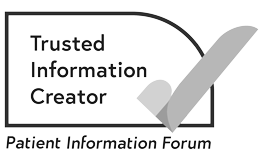Stages of testicular cancer
The stage of a cancer describes its size and whether it has spread from where it started.
What is staging?
The stage of a cancer is a term used to describe:
- its size
- whether it has spread from where it started.
For testicular cancer, staging also includes levels of tumour markers.
Knowing the stage helps doctors decide on the best treatment for you. Your cancer doctor or nurse can tell you more about the stage of your cancer.
The most commonly used staging systems for testicular cancers are the TNM and number staging systems.
TNM staging system
T describes the size of the tumour. It is numbered between 0 and 4 depending on the size and extent of the tumour.
- T0 means that there are no signs of a tumour.
- Tis means there are abnormal cells in the testicle that are pre-cancerous (carcinoma in situ).
- T1 means the tumour is inside the testicle and has not spread outside of the testicle.
- T2 means a tumour is inside the testicle but has spread to the outer layers within the testicle. It has not spread outside the testicle.
- T3 means a tumour has spread to the outer layers within the testicle and to the spermatic cord. It may also have started to spread outside of the testicle.
- T4 means a tumour has spread into the scrotum and may have spread to the lymphatic system.
N describes whether the cancer has spread to the lymph nodes.
- N0 means that no lymph nodes are affected.
- N1, N2 or N3 means there are cancer cells in the lymph nodes. The number depends on how many lymph nodes contain cancer cells, the size and where they are.
M describes whether the cancer has spread to another part of the body. This is called metastatic cancer.
- M0 means the cancer has not spread.
- M1 means the cancer has spread to distant lymph nodes or to organs such as the lungs.
Serum tumour markers
The levels of serum tumour markers are also included as part of the staging for testicular cancer.
- S0 means tumour marker levels are within normal limits.
- S1 means tumour markers are slightly raised.
- S2 means tumour markers are moderately raised.
- S3 means tumour markers are very high.
Number staging system
Stage 1
The cancer may be any size and is only in the testicle.
Stage 1 cancers are divided into 2 groups depending on whether tumour markers are normal (or return to normal) or rise after surgery.
Stage 2
The cancer has spread to local lymph nodes in the tummy (abdomen) called the retroperitoneal lymph nodes.
Stage 2 cancers are divided into different groups depending on the size and number of lymph nodes affected.
Stage 3
The cancer has spread to distant lymph nodes in the chest, or higher up. For example, this could be the lymph nodes in your chest, armpit or neck. Retroperitoneal lymph nodes may also be affected.
Stage 3 cancers are divided into different groups: 3a, 3b and 3c. In stage 3c, the cancer may have spread to other organs such as the liver or brain.
Your cancer doctor can give you more information about the stage of your cancer.
We understand that waiting to know the stage of your cancer can be a worrying time. We're here if you need someone to talk to. You can:
- Call the Macmillan Support Line on 0808 808 00 00.
- Chat to our specialists online.
- Visit our testicular cancer forum to talk with people who have been affected by testicular cancer, share your experience, and ask an expert your questions.
About our information
-
References
Below is a sample of the sources used in our testicular cancer information. If you would like more information about the sources we use, please contact us at cancerinformationteam@macmillan.org.uk
The British Association of Urological Surgeons (BAUS) Guidelines on Testicular Cancer. March 2015. Available from: https://www.baus.org.uk/professionals/sections/testicular_cancer.aspx (accessed April 2022).
European Association of Urology (EAU) Guidelines on Testicular Cancer 2022. Available from: https://d56bochluxqnz.cloudfront.net/documents/full-guideline/EAU-Guidelines-on-Testicular-Cancer-2022.pdf (accessed April 2022).
European Society for Medical Oncology (ESMO). Testicular seminoma and non-seminoma: ESMO Clinical Practice Guidelines for diagnosis, treatment and follow-up. Last updated 2022.
European Society for Medical Oncology (ESMO). Testicular seminoma and non-seminoma: ESMO Clinical Practice Guidelines for diagnosis, treatment and follow-up. Last updated 2022. Available from: https://www.annalsofoncology.org/article/S0923-7534(22)00007-2/fulltext (accessed April 2022).
-
Reviewers
This information has been written, revised and edited by Macmillan Cancer Support’s Cancer Information Development team. It has been reviewed by expert medical and health professionals and people living with cancer. It has been approved by Senior Medical Editor, Dr Ursula McGovern, Consultant Medical Oncologist.
Our cancer information has been awarded the PIF TICK. Created by the Patient Information Forum, this quality mark shows we meet PIF’s 10 criteria for trustworthy health information.
The language we use
We want everyone affected by cancer to feel our information is written for them.
We want our information to be as clear as possible. To do this, we try to:
- use plain English
- explain medical words
- use short sentences
- use illustrations to explain text
- structure the information clearly
- make sure important points are clear.
We use gender-inclusive language and talk to our readers as ‘you’ so that everyone feels included. Where clinically necessary we use the terms ‘men’ and ‘women’ or ‘male’ and ‘female’. For example, we do so when talking about parts of the body or mentioning statistics or research about who is affected.
You can read more about how we produce our information here.
Date reviewed
This content is currently being reviewed. New information will be coming soon.

Our cancer information meets the PIF TICK quality mark.
This means it is easy to use, up-to-date and based on the latest evidence. Learn more about how we produce our information.



